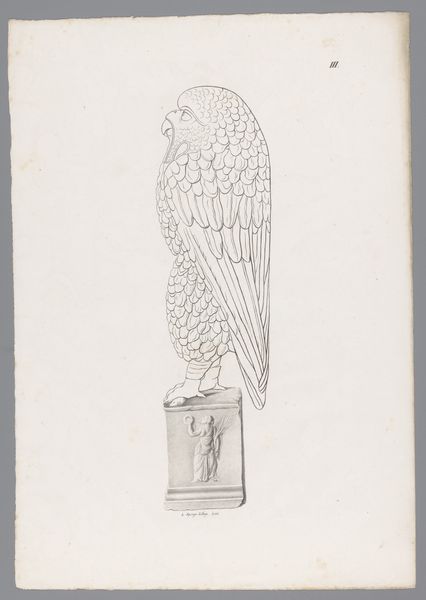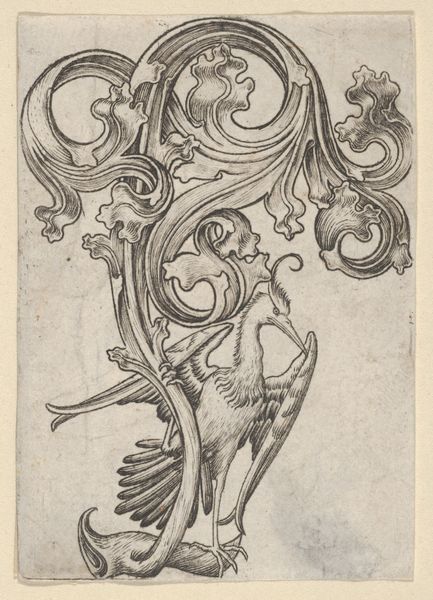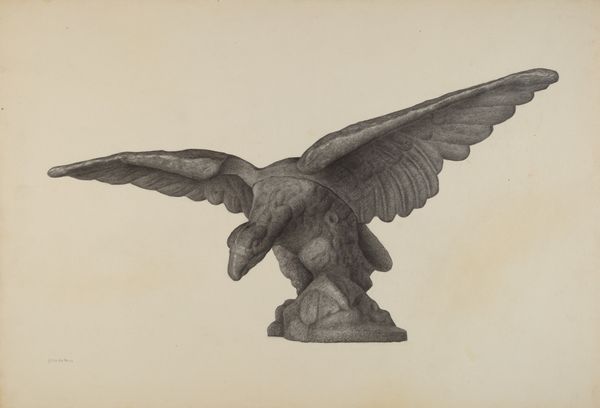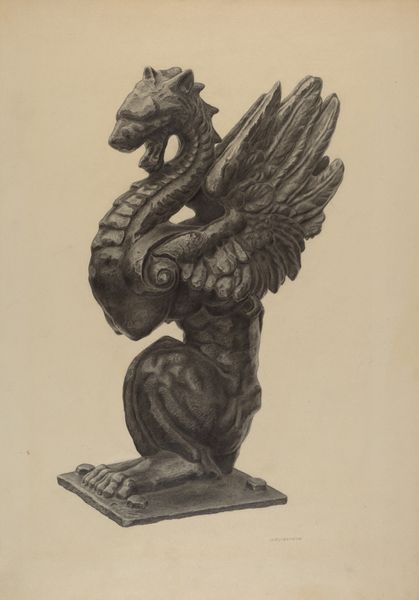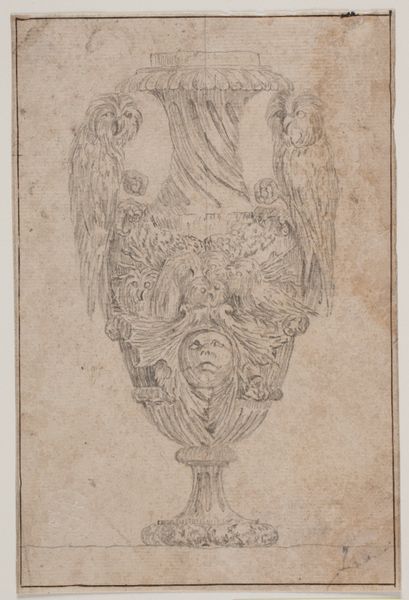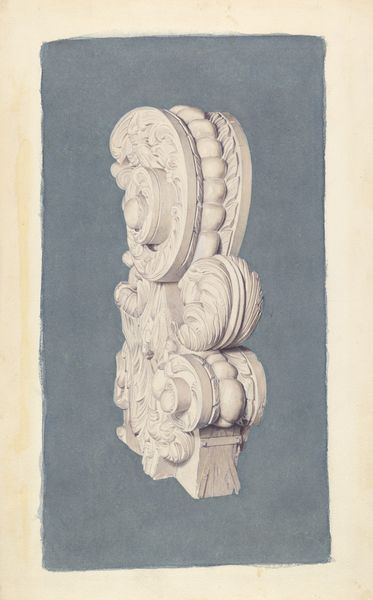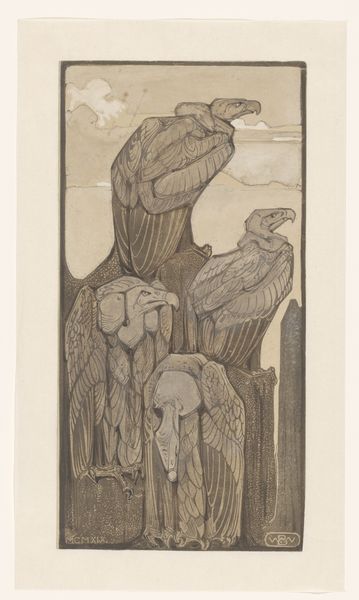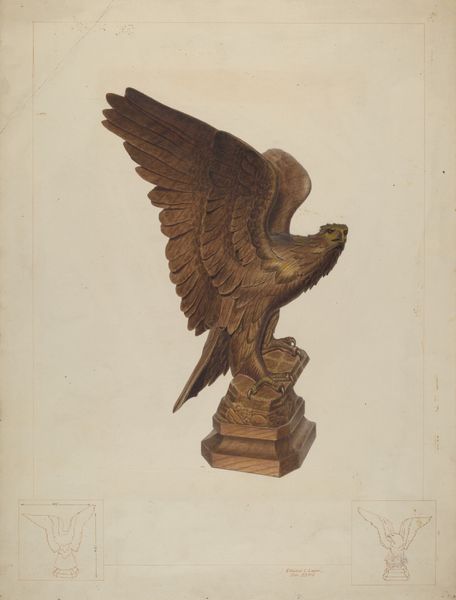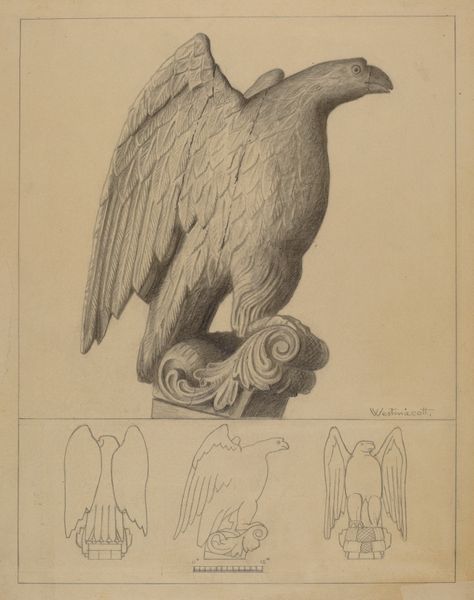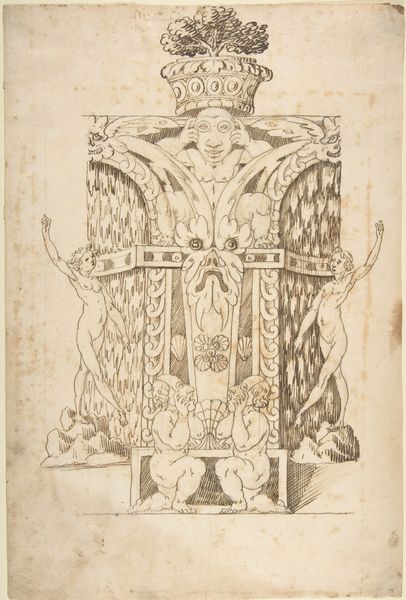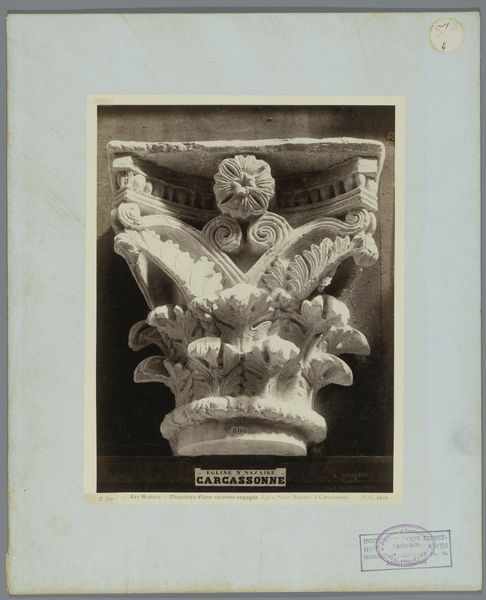
drawing, pencil
#
drawing
#
landscape
#
form
#
pencil drawing
#
pencil
#
line
#
realism
Dimensions: overall: 25.9 x 42.7 cm (10 3/16 x 16 13/16 in.) Original IAD Object: 66" long
Copyright: National Gallery of Art: CC0 1.0
Editor: So, this is "Figurehead: Eagle," a pencil drawing from around 1937. What strikes me immediately is the intense level of detail given the limitations of the medium, almost trompe-l'oeil. What do you see in it, focusing perhaps on the technique? Curator: Well, immediately the relationship between line and form presents itself. The stark realism achieved through line work indicates an emphasis on the subject's materiality and presence, inviting an analysis of semiotics of realism. Consider the composition - a solitary object on a two-tone background. What do you think this draws our attention to? Editor: I guess it forces you to focus on the shape and texture of the figurehead, absent of a surrounding environment. The precision of the lines gives the form substance and tangibility. Curator: Precisely. The absence of color and complex context allows for a study of form itself. Notice the careful shading that gives volume and the sharp outlines that define its edge. How would you describe the use of light? Editor: The light source appears to be coming from above and to the left. The drawing relies on a subtle play of light and shadow to emphasize the three-dimensional form, which almost jumps out at you from the neutral background. It’s very effective! Curator: Indeed, it’s a remarkable example of what can be achieved through considered application of line, shade, and form in drawing, irrespective of overt historical symbolism. Editor: I learned how paying close attention to the lines, shadows, and the isolation of the figure can drastically affect how we perceive an artwork. It definitely makes you see the drawing and subject in a whole new light. Curator: Likewise, observing your fresh perspective is invaluable, a clear indication of how structural analysis helps one deconstruct the visual language and amplify appreciation.
Comments
No comments
Be the first to comment and join the conversation on the ultimate creative platform.
